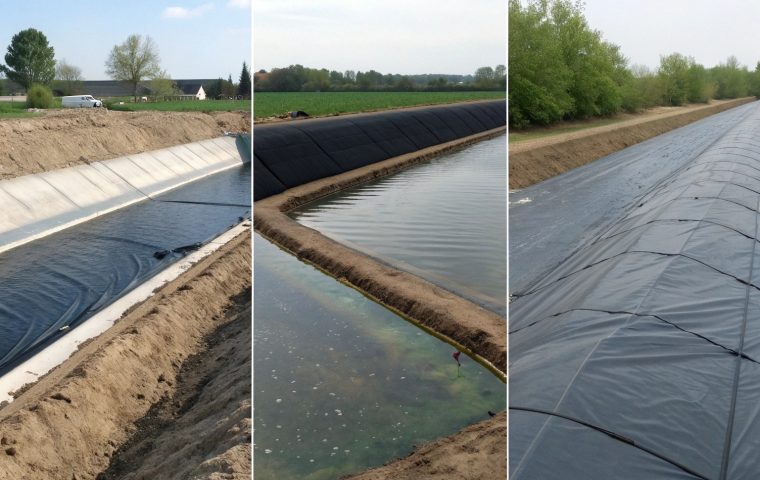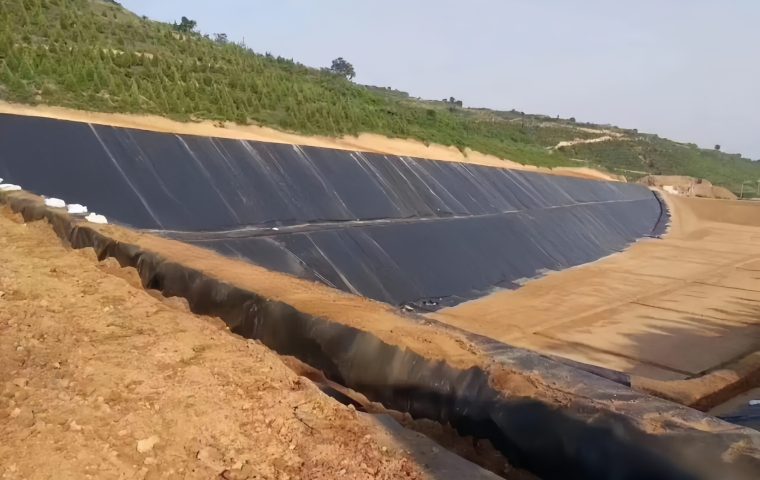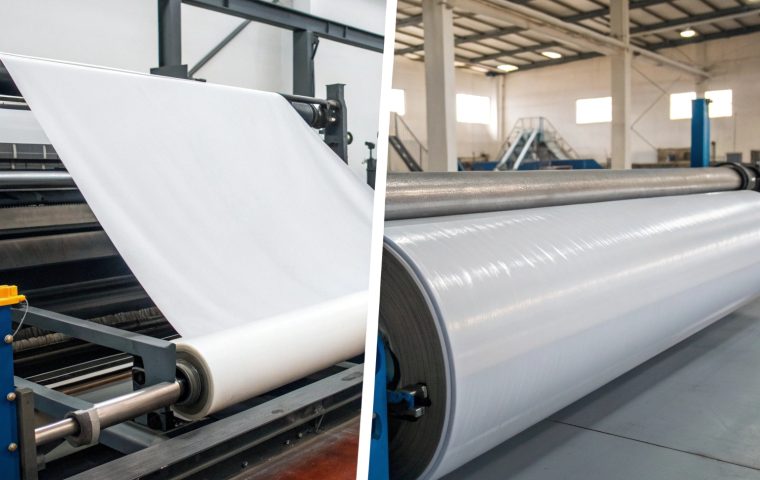Miscalculating geomembrane roll specs leads to costly shipping errors and project delays. Wasted container space and surprise fees can ruin your budget. This guide provides the factory standards for seamless importing.
Standard geomembrane rolls are optimized for shipping at a 5.8m width to fit containers. Common thicknesses range from 0.5mm to 3.0mm, with a standard roll length of 50m. These dimensions are crucial for calculating weight, volume, and ensuring cost-effective FCL shipments.
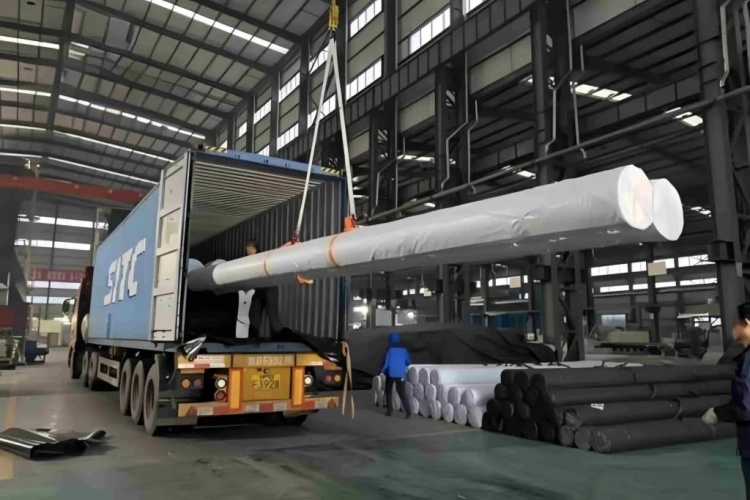
Understanding the product is only half the battle; mastering its logistics is what protects your profit margin. A seemingly small detail like roll width can have a massive impact on your total landed cost, installation efficiency, and project timeline. Importers who overlook these details often pay for it in freight charges and on-site complications. Let's break down the critical numbers you need to know before placing your next order.
What are the common roll sizes and thickness options available for geomembranes?
Ordering the wrong roll width can result in excessive welding on-site or a container that cannot be loaded efficiently. Guesswork is not a strategy when managing large-scale material procurement.
For export, a 5.8m roll width is the industry-standard recommendation. This size is specifically designed to maximize space in 20ft and 40ft shipping containers. While other widths are available, 5.8m offers the best balance of installation efficiency and logistical cost.
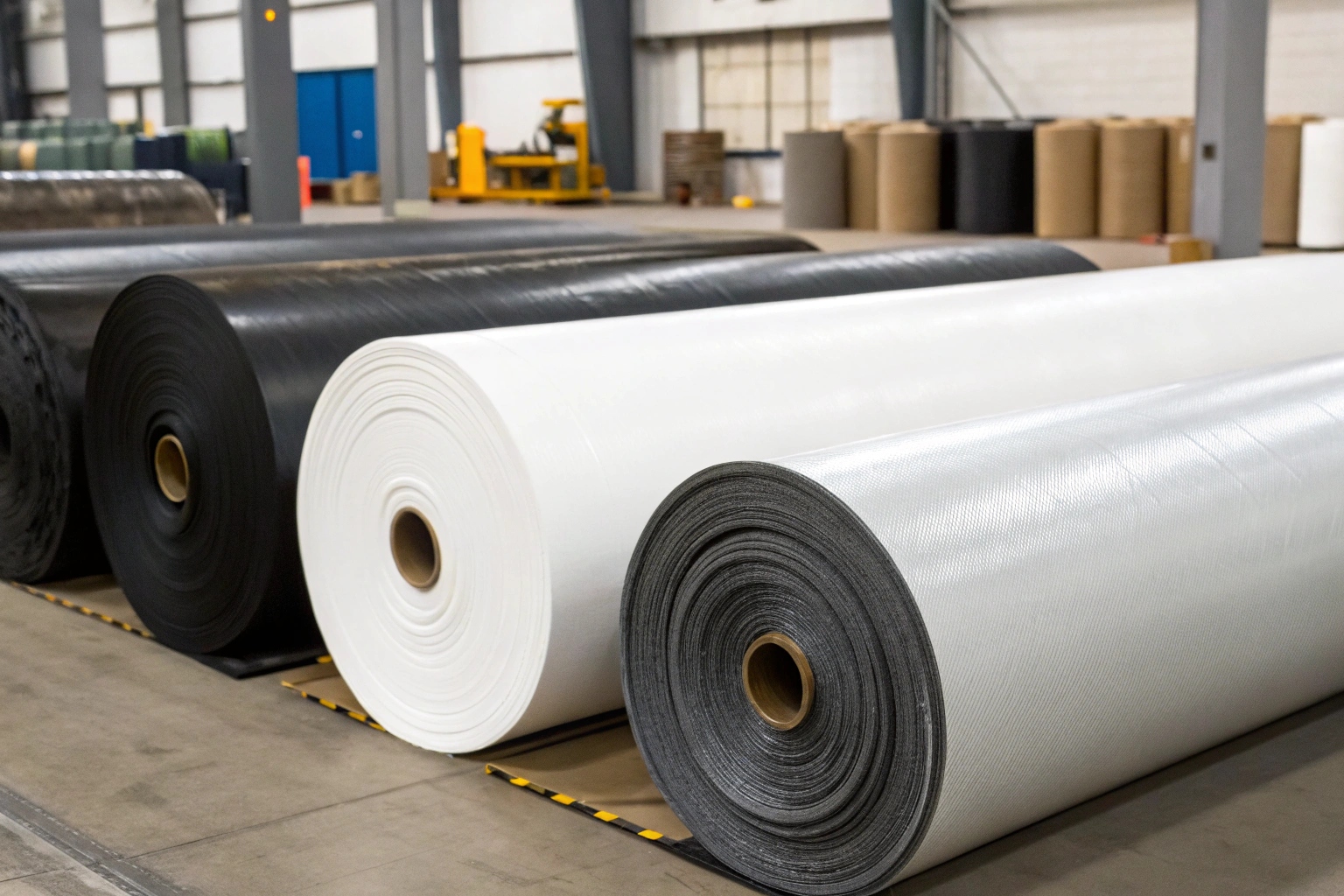
Wider rolls mean fewer seams to weld, reducing on-site labor, potential leak points, and long-term maintenance. The 5.8m width allows one roll to fit the length of a 20ft container, and two rolls to fit end-to-end in a 40ft container, minimizing wasted space.
| Geomembrane Type | Common Factory Widths | Recommended Export Width |
|---|---|---|
| HDPE | 4m, 6m, 7m, 8m | 5.8m |
| LDPE / LLDPE | 4m - 8m | 5.8m |
| PVC | 2m - 6m | 5.8m (if available) |
| EVA | 1m - 6m | 5.8m (if available) |
Common Thicknesses and Lengths
- Standard Thicknesses: Geomembrane thickness typically ranges from 0.3mm to 3.0mm. The most common specifications for engineering projects are 0.75mm, 1.0mm, 1.5mm, and 2.0mm.
- Standard Length: The default roll length is 50m. However, this is customizable, and lengths of 100m or 150m can be produced for thinner materials to meet project requirements.
How can I estimate the weight and shipping volume of geomembrane rolls before importing?
Underestimating your shipment's total weight can lead to rejected container bookings and last-minute freight cost increases. You need a reliable way to calculate this before your order leaves the factory.
You can accurately calculate the weight using a simple formula: Weight (kg/m²) = Thickness (mm) × Density (g/cm³). By knowing this, you can determine the total square meters that will fit within a container's maximum payload.
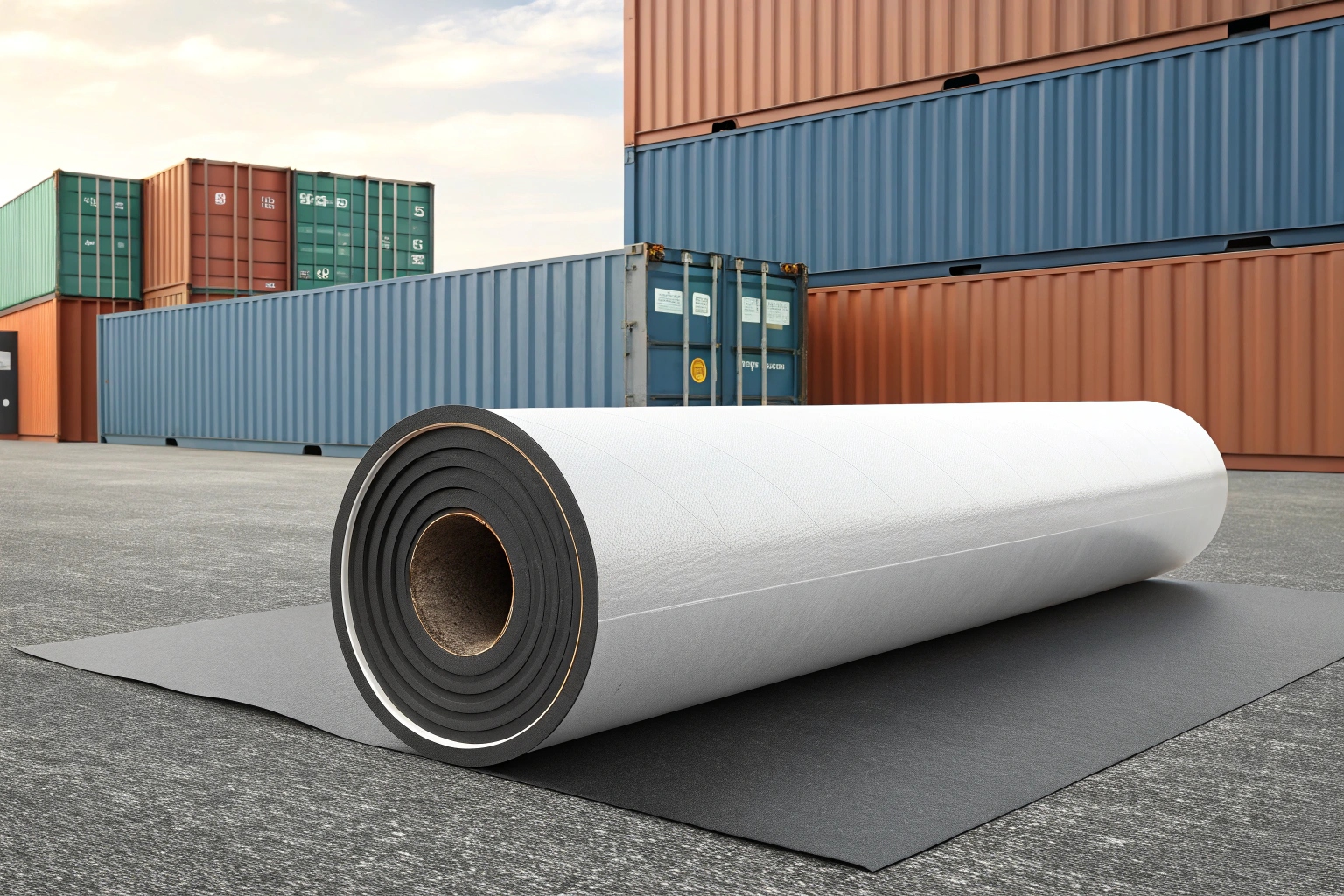
To plan your shipment, you first need the standard material densities and the maximum payload of shipping containers.
Step 1: Know the Standard Densities
The density varies by polymer type. Here are the typical ASTM standard values:
| Material | Typical Density (g/cm³) |
|---|---|
| HDPE | ≥ 0.94 g/cm³ |
| LLDPE | 0.92 - 0.93 g/cm³ |
| PVC | 1.30 - 1.45 g/cm³ |
| EVA | ~ 0.93 g/cm³ |
Step 2: Calculate Weight and Max Area
Let's calculate for an order of 1.5mm HDPE geomembrane into a 40ft container (max payload ~27,000 kg).
- Weight per square meter:
1.5mm × 0.94 g/cm³ = 1.41 kg/m² - Maximum Area per Container:
27,000 kg / 1.41 kg/m² = 19,148 m²
This calculation tells you exactly how many square meters to order to maximize your freight investment.
What packaging and loading methods ensure safe international transportation of geomembrane rolls?
Geomembrane arriving damaged, wet, or degraded from UV exposure during transit is an avoidable disaster. Improper packaging and loading practices put your entire material investment at risk.
The export standard is to wrap each roll tightly in a heavy-duty, black woven geotextile. For shipment, always insist on FCL (Full Container Load) as oversized rolls are unsuitable and unsafe for LCL (Less than Container Load) shipping.
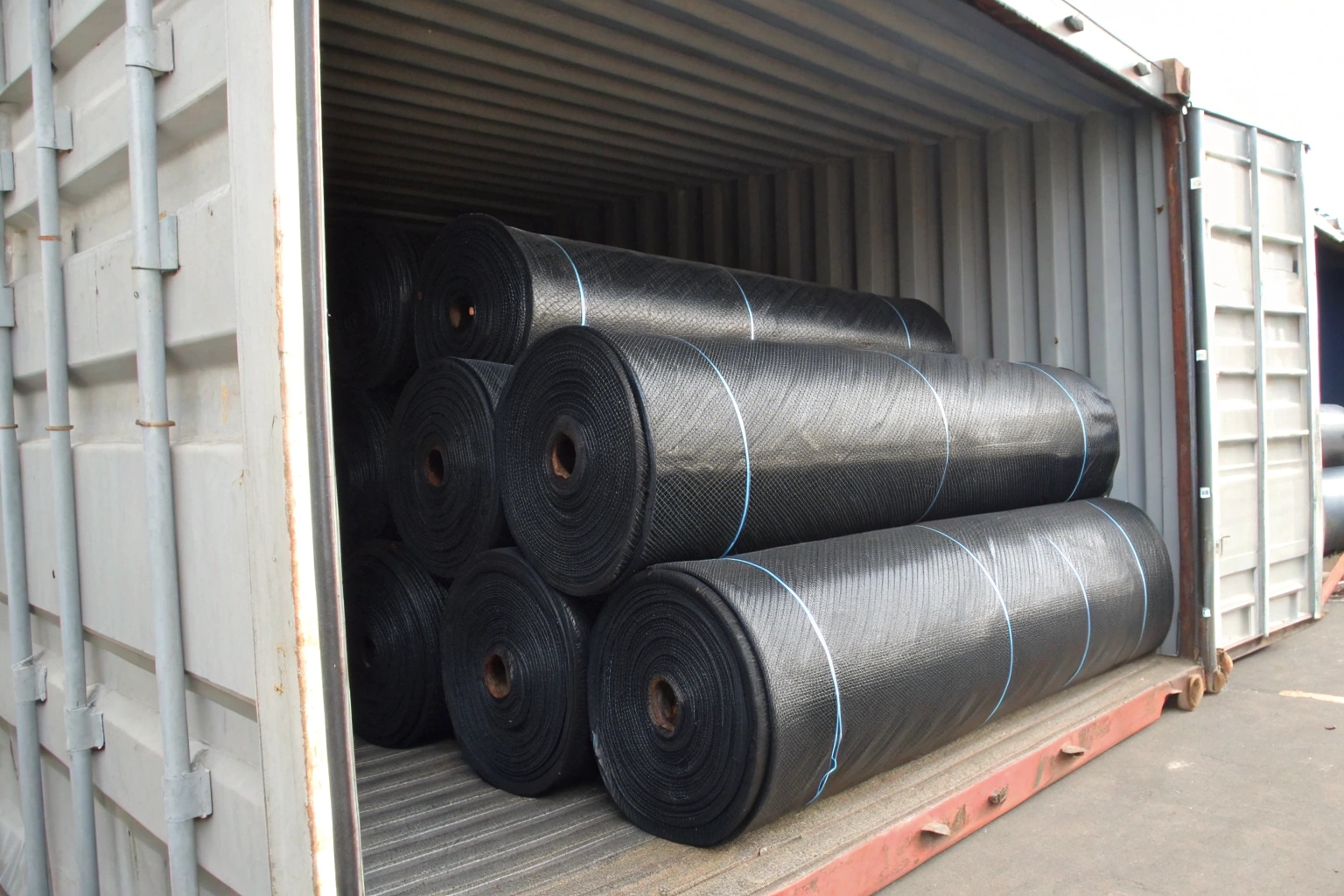
Secure packaging and smart shipping choices are non-negotiable for protecting your assets.
Standard Export Packaging
- Core: Rolls are wound around a strong inner paper or plastic tube.
- Wrapping: The entire roll is tightly wrapped with at least one layer of black woven geotextile. This provides crucial protection against punctures, moisture, and UV degradation during handling and transit.
- Securing: Two or more high-strength straps are applied to keep the roll tight and prevent unraveling.
Por qué FCL is Essential
Shipping geomembrane rolls via LCL is a major risk. Because they are oversized and heavy, they cannot be palletized. This leads to major problems at ports that lack the equipment for handling loose, oversized cargo, often resulting in:
- Extreme manual handling fees.
- High risk of damage from forklifts.
- Shipment delays or rejections.
Pro Tip: If your order doesn't fill a 20ft container, consolidate it at the factory with other geosynthetic products (like geotextiles or geogrids) to ship as an FCL.
How can I verify that the manufacturer’s geomembrane rolls meet export quality and packaging standards?
Receiving a shipment that doesn't match the technical specifications you ordered is a nightmare for any importer. You need a simple, effective process to verify quality before it leaves the port of origin.
Request a detailed Manufacturer's Quality Certificate (MTC) for your specific batch. Cross-reference the data with your order specifications and ensure each roll is clearly labeled. For high-value orders, a third-party pre-shipment inspection is the best guarantee.
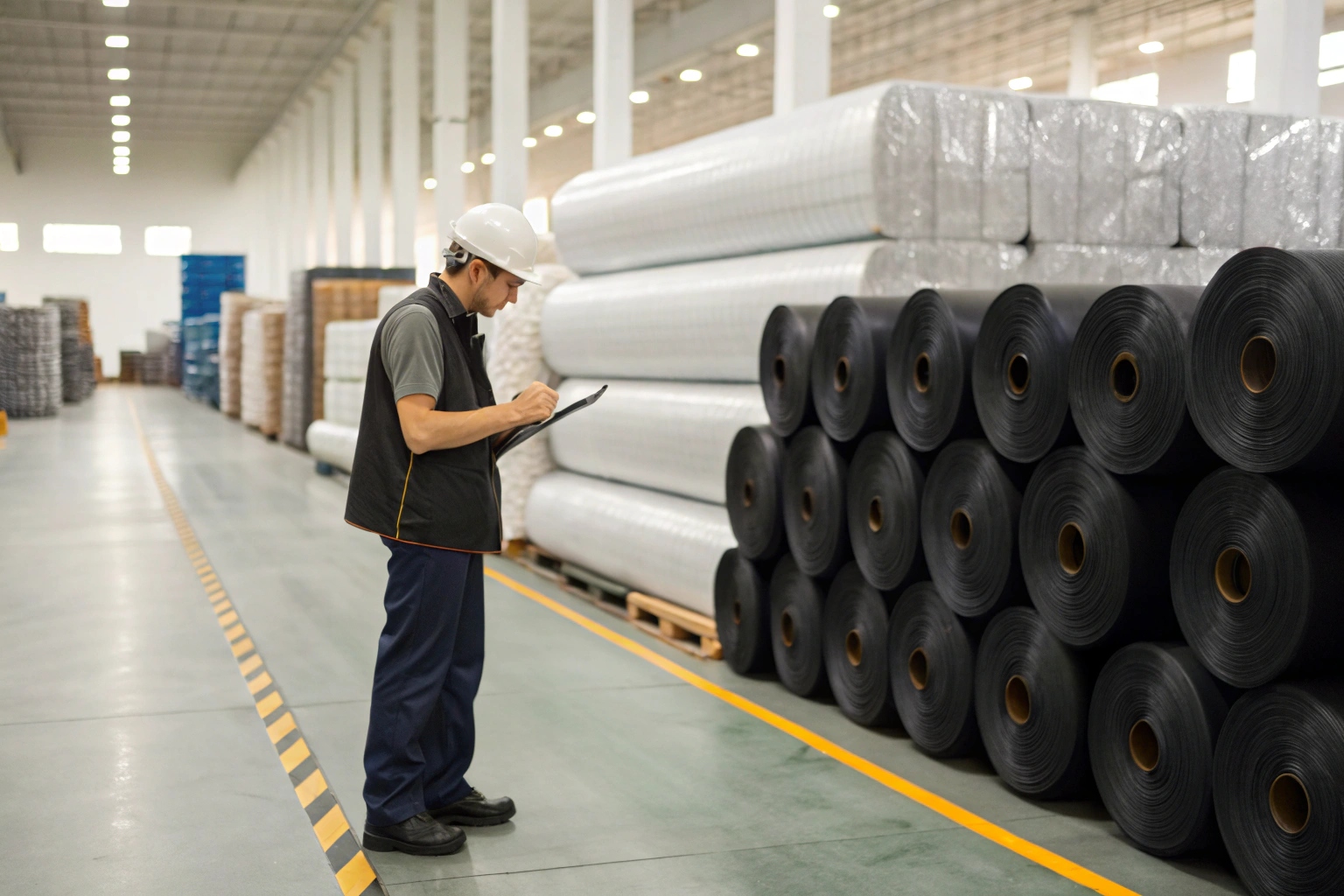
Verification is about trust but also about documentation. A reliable supplier will provide transparent proof of quality.
Your Pre-Shipment Verification Checklist:
- Request the MTC: Before final payment, get the test certificate for your production batch. It should list key properties like thickness, density, tensile strength, and puncture resistance, confirming they meet standards like GRI-GM13.
- Check Roll Labels: Each roll must have a durable, weather-resistant label containing:
- Product Name (e.g., HDPE Geomembrane 1.5mm)
- Roll Number / Batch Number
- Dimensions (Width x Length)
- Net Weight
- Confirm Packaging: Ask for photos of the wrapped rolls to confirm they meet the woven geotextile wrapping standard.
- Consider Third-Party Inspection: For large or critical projects, engage a service like SGS or Bureau Veritas to inspect the goods at the factory before they are loaded. This provides an independent, unbiased report on quality and quantity.
Conclusion
Master your import logistics by standardizing on 5.8m wide rolls. Use the weight formula to maximize container payload, insist on FCL shipping, and verify quality with factory documentation before shipment.

